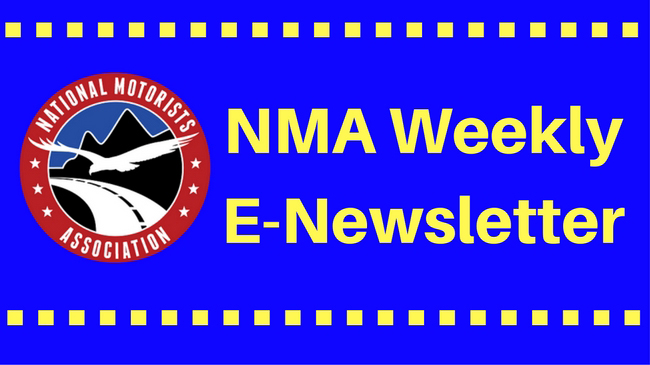
The need to advocate for motorists’ rights has grown during the time of COVID. NMA members need to be more vigilant than ever in their home communities and states.
This newsletter is a reflection of what we see trending nationally. Last week in Part 1, we looked into our crystal ball at speed limits, automated traffic enforcement, and street surveillance. In Part 2, the focus is on police reform, infrastructure, tolls, and some positive issues we see coming down the pike.
We also want to hear your predictions of “What’s Next?” Please email your comments to nma@motorists.org.
Police Reform
After the death of George Floyd in Minneapolis, protests erupted in big cities and small towns around the country. Most protestors are demanding police reform and an end to police brutality. Why is this issue important to motorists? Most police interactions with the public are traffic-stop related.
The issue of police reform, transparency, and the role of enforcement will continue to be an issue in nearly every community. Both the US House and Senate are working on national police reform bills, and President Trump recently signed a related Executive Order.
The biggest concern for motorists in this police reform debate is that automated traffic enforcement does not become a default solution.
Infrastructure
Party politics dominate infrastructure at almost every level of government. Nationally, the Senate released last July a $287 billion plan to fix and maintain highways and bridges across the US. This month, the House offered its plan to tackle infrastructure after COVID-19 with an emphasis on maintenance, and increased funding for public transit. President Trump has also released an infrastructure plan that is receiving opposition due to the $1 trillion price tag.
States were struggling with funding infrastructure improvements before the pandemic crisis. Now, the situation has worsened due to the decrease in gas tax revenues during the pandemic.
Even though the Illinois gas tax will go up on July 1, the state’s DOT projected in early May that it could lose $560 million in revenue this year. Washington State similarly declared that up to 40 percent of revenue would be lost due to the crisis. The two states are not alone in delaying or canceling road projects for the remainder of the year.
How to pay for infrastructure and what kind of infrastructure to fund appear to be the two questions that very few elected officials (or political parties) can agree upon during this time.
Road Tolls, Congestion Pricing, and Road User Charges (ROC)
With the downturn in the economy, government officials and other bureaucrats will hawk road tolls and congestion pricing as the best way to pay for roads and other expenses. Some analysts claim that the gas tax is a nearly dead funding source due to the advent of electric vehicles and more efficient gas-powered cars. The situation isn’t helped by frequent raids on gas tax revenues by both state and federal officials to pay for various programs, including some not transportation-related.
States are working hard to come up with answers on how to increase maintenance for older roads and bridges and investing in new infrastructure to support population growth. A prime example is the state of Michigan, which, before the pandemic hit, was already struggling with the magnitude of its infrastructure funding problem.
In 2019, state lawmakers had an open fight with Governor Gretchen Whitmer when she proposed a 45-cent increase to Michigan’s 26.3-cent fuel tax rate. She felt this was the easiest way to provide funds for road and bridge projects. Lawmakers disagreed, creating a six-month impasse until a plan for tolling roads in the state was hatched.
The Michigan Senate passed SB517, a bill that would establish a panel to investigate the feasibility of charging tolls on roads and bridges. That same bill has passed the House Transportation Committee, and now it’s on its way to the full House for a vote. The Governor was against tolls a year ago, and as recently as January said that she would like to see a number of funding sources for infrastructure.
Road User Charges, also referred to as a VMT (vehicle miles traveled) tax, continues to be seen as the alternative to the gas tax. If such a tax is ever implemented, this would mean that every mile you drive would be tracked and taxed.
We addressed the subject last year in this series of three newsletters:
Are we Slinking Ever Closer to a Universal Road User Charge?
- Part 1 took a look at the national landscape
- Part 2 examined what Congress was doing a year ago
- Part 3 investigated regional and local efforts
Many cities will continue to push for congestion pricing. New York state lawmakers have already passed legislation for NYC to start the country’s first congestion pricing scheme. The state, though, has not yet received permission from the federal government to proceed. Boston, Washington, D.C., Los Angeles, San Francisco, and Seattle are toying with the idea.
Some Positive Issues for Motorists’ Rights
- Civil Asset Forfeiture laws will continue to be reformed on the federal and state levels.
- Overall traffic enforcement may be reduced as state, and local police resources are stretched thin due to budget cuts.
- Rank-and-file police officers will feel more comfortable either whistleblowing or even suing police departments over ticket quotas.
- Driverless and connected cars will not be deployed as predicted any time soon. There are too many algorithmic flaws and not enough funding to fix the road infrastructure to support them in the near future.
Many issues are ahead, and we need our readers of the Weekly E-Newsletter to support the efforts of the NMA and volunteers across the country who are standing up for motorists’ rights. Thank you for your support!



